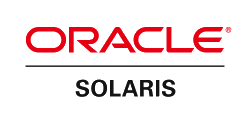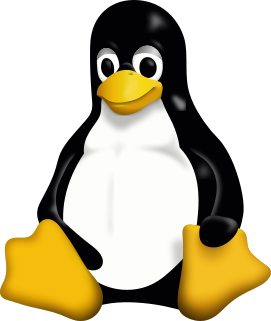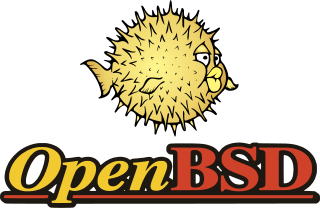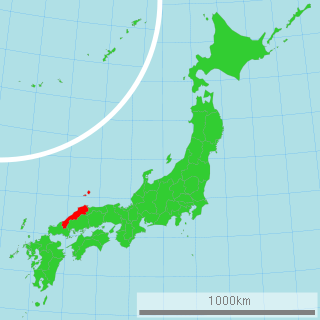
Free software or libre software is computer software distributed under terms that allow users to run the software for any purpose as well as to study, change, and distribute it and any adapted versions. Free software is a matter of liberty, not price: users—individually or in cooperation with computer programmers—are free to do what they want with their copies of a free software regardless of how much is paid to obtain the program. Computer programs are deemed free if they give users ultimate control over the software and, subsequently, over their devices.

GNU is an operating system and an extensive collection of computer software. GNU is composed wholly of free software, most of which is licensed under the GNU Project's own General Public License (GPL).

Red Hat, Inc. is an American multinational software company providing open-source software products to the enterprise community. Founded in 1993, Red Hat has its corporate headquarters in Raleigh, North Carolina, with other offices worldwide. It became a subsidiary of IBM on July 9, 2019.

OpenVMS is a multi-user, multiprocessing virtual memory-based operating system (OS) designed for use in time-sharing, batch processing, and transaction processing. It was first released by Digital Equipment Corporation in 1977 as VAX/VMS for its series of VAX minicomputers. OpenVMS also runs on DEC Alpha systems and the HP Itanium-based families of computers. OpenVMS is a proprietary operating system, but source code listings are available for purchase.

Solaris is a Unix operating system originally developed by Sun Microsystems. It superseded their earlier SunOS in 1993. In 2010, after the Sun acquisition by Oracle, it was renamed Oracle Solaris.
Darwin is an open-source Unix-like operating system first released by Apple Inc. in 2000. It is composed of code developed by Apple, as well as code derived from NeXTSTEP, BSD, Mach, and other free software projects.
In computing, cross-platform software is computer software that is implemented on multiple computing platforms. Cross-platform software may be divided into two types; one requires individual building or compilation for each platform that it supports, and the other one can be directly run on any platform without special preparation, e.g., software written in an interpreted language or pre-compiled portable bytecode for which the interpreters or run-time packages are common or standard components of all platforms.

Open-source software (OSS) is a type of computer software in which source code is released under a license in which the copyright holder grants users the rights to study, change, and distribute the software to anyone and for any purpose. Open-source software may be developed in a collaborative public manner. Open-source software is a prominent example of open collaboration.
In software engineering, a project fork happens when developers take a copy of source code from one software package and start independent development on it, creating a distinct and separate piece of software. The term often implies not merely a development branch, but also a split in the developer community, a form of schism.

Free and open-source software (FOSS) is software that can be classified as both free software and open-source software. That is, anyone is freely licensed to use, copy, study, and change the software in any way, and the source code is openly shared so that people are encouraged to voluntarily improve the design of the software. This is in contrast to proprietary software, where the software is under restrictive copyright licensing and the source code is usually hidden from the users.
Open-source software development is the process by which open-source software, or similar software whose source code is publicly available, is developed by an open-source software project. These are software products available with its source code under an open-source license to study, change, and improve its design. Examples of some popular open-source software products are Mozilla Firefox, Google Chromium, Android, LibreOffice and the VLC media player. Open-source software development has been a large part of the creation of the World Wide Web as we know it, with Tim Berners-Lee contributing his HTML code development as the original platform upon which the internet is now built.

Linux is a family of open source Unix-like operating systems based on the Linux kernel, an operating system kernel first released on September 17, 1991, by Linus Torvalds. Linux is typically packaged in a Linux distribution.

OpenBSD is a free and open-source Unix-like operating system based on the Berkeley Software Distribution. Theo de Raadt created OpenBSD in 1995 by forking NetBSD. According to De Raadt, OpenBSD is a research operating system for developing security mitigations.

A Unix-like operating system is one that behaves in a manner similar to a Unix system, while not necessarily conforming to or being certified to any version of the Single UNIX Specification. A Unix-like application is one that behaves like the corresponding Unix command or shell. There is no standard for defining the term, and some difference of opinion is possible as to the degree to which a given operating system or application is "Unix-like".

Unix is a family of multitasking, multiuser computer operating systems that derive from the original AT&T Unix, development starting in the 1970s at the Bell Labs research center by Ken Thompson, Dennis Ritchie, and others.
The open-source-software movement is a movement that supports the use of open-source licenses for some or all software, a part of the broader notion of open collaboration. The open-source movement was started to spread the concept/idea of open-source software. Programmers who support the open-source-movement philosophy contribute to the open-source community by voluntarily writing and exchanging programming code for software development. The term "open source" requires that no one can discriminate against a group in not sharing the edited code or hinder others from editing their already-edited work. This approach to software development allows anyone to obtain and modify open-source code. These modifications are distributed back to the developers within the open-source community of people who are working with the software. In this way, the identities of all individuals participating in code modification are disclosed and the transformation of the code is documented over time. This method makes it difficult to establish ownership of a particular bit of code but is in keeping with the open-source-movement philosophy. These goals promote the production of high-quality programs as well as working cooperatively with other similarly-minded people to improve open-source technology. This led to software such as MediaWiki, the software with which the Wikipedia website is built.
Software categories are groups of software. They allow software to be understood in terms of those categories. Instead of the particularities of each package. Different classification schemes consider different aspects of software.
Open source products include permission to use the source code, design documents, or content of the product. It most commonly refers to the open-source model, in which open-source software or other products are released under an open-source license as part of the open-source-software movement. Use of the term originated with software, but has expanded beyond the software sector to cover other open content and forms of open collaboration.










